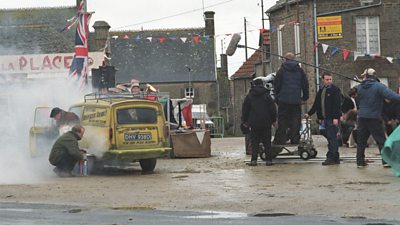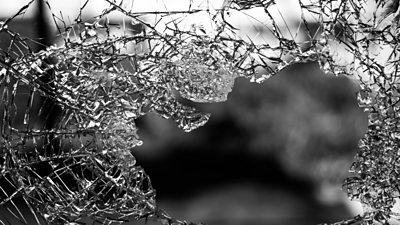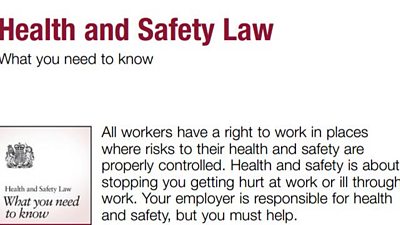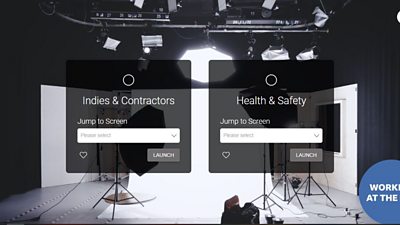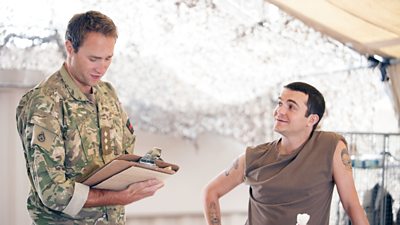Those needing more information on risk assessment can read our (only accessible on the �鶹�� network).
What is a risk assessment?
- A structured way of thinking about how an activity or situation that is going to happen at some point in the future might cause harm to people, to property or to the environment, and thereby helping you to identify measures to prevent or minimise the risk of this happening. Think of it as a safety planning tool.
Why do I need one?
- The requires a suitable and sufficient assessment of the risks to health and safety arising out of our work activities in order to identify the measures needed to comply with relevant safety regulations
When should I do it?
- When the activities or situations proposed present a foreseeable and significant risk of injury or ill-health
- When you don’t already have a risk assessment or safe operating procedure which adequately addresses the risks from the proposed activity; or where the review date for these has lapsed
- The earlier you do it, the easier it will be able to co-ordinate and communicate its findings, and the more effective it is likely to be in preventing accidents or ill-health – it should not be considered a last minute task.
How should it be done?
- The basic steps are given in the HSE’s and in our How to do risk assessment
- Make sure you have a good understanding of the proposed activity and location, so you have a good idea of what could go wrong – do your research, speak with colleagues / locals / experts
- Make sure you know about the people involved in case any have conditions or a lack of capabilities which could predispose them to risk of injury / ill-health e.g. allergies, phobias, pre-existing injuries, disabilities
- To save on repetition, you may copy previous similar assessments, but the final risk assessment must still be suitable and sufficient in describing your activities and location
- The detail in the risk assessment should be proportionate to the risks involved – simple low risk activities can be covered by simple bullet points; more complex higher risk activities will likely need greater detail
- Your evaluation of risk should describe the residual risk i.e. that which remains once all controls are in place – this should be at an ‘acceptable’ level for the activity to go ahead (see below)
- Once completed, the risk assessment should be authorised by an appropriate manager i.e. someone with sufficient competence and seniority to sanction the activities to go ahead as planned. It could be the assessor themselves, though most will prefer a second opinion. Authorisation is a check on the suitability of the planning process and the evaluation of risk – approval does not mean the transference of safety responsibilities away from those who create and manage the risks on location
- Where third parties are responsible for managing an activity for the �鶹��, they are also responsible for risk assessing it. We are then responsible for checking its suitability, co-ordinating and communicating its findings to those under our control, and using it to monitor safety performance.
Where should it be done?
- The risk assessment can either be done using the �鶹��’s (preferred) or using the �鶹��’s (Word). Those who complete it using the Word form should save it in the online process to help satisfy the legal requirements for record keeping and for ease of access / authorisation
- 'Last minute changes’ on location do happen. If they don’t significantly impact on the risks, you can take what additional safety measures you think necessary, if any, without recourse to your original risk assessment. However, if the changes are significant, you’ll likely need to stop what you are doing to re-visit the risk assessment process – any changes made should be proportionate to the risks involved, recorded, co-ordinated and communicated and, where necessary, authorised by an appropriate manager
- For risk assessments in News, see our Safety Short on Safety Planning of News Deployments (see Useful Documents).
Who is responsible?
- Responsibilities for risk assessment are described in Safety Responsibilities by Job Role
- Risk Assessors need to be competent – for activities which are routine business, this may mean nothing more than experience in the workplace and training in the process (see Safety Training and Competence); but for other activities, it might mean needing to have relevant professional qualifications (e.g. dive qualifications for planning a dive shoot).
Useful documents
-
-
-
-
[�鶹�� network only]
-
[�鶹�� network only]
Recommended links
-
�鶹�� Academy: How to do risk assessment Online refresher guide
-
[�鶹�� network only]
-
[�鶹�� network only]
-
General safety topics
More from SSR
-
Your platform to record accidents, risk assessments, assurance monitoring and inspections
-
Safety Equipment Stores
Just one number to call: 020 3614 5155 -
�鶹�� Safety Guidelines
An A-Z of �鶹��'s Health and Safety Guidelines -
Safety Advice Line: 0370 411 0464 Email: safety@bbc.co.uk
Events guidance - key links:
- Exhibitions
- General Guidance
- Indoor Location Recce Checklist
- Outdoor Location Recce Checklist
- Major Incidents & Emergency Planning
- Marketing and Promotional
- Noise Exposure
- Planning and Management
- Responsibilities
- Responsibilities Form
- Laser Lighting Effects
- Strobe Lighting
- Temporary Stages and Rostra
Health topics - key links:
- (�鶹�� network only)
- Contributors Fitness to Participate
- Display Screen Equipment (DSE)
- (�鶹�� network only)
- First Aid and Welfare on Location
- International Travel - Risks & Health
- Manual Handling
- Mental Health: Homepage
- (�鶹�� network only)
- Personal Health and Wellbeing
- Pregnancy
- Psychological Trauma Support & Trauma Risk Management (TRiM)
- Tiredness and Fatigue
- Travel Health Contacts
�鶹�� High Risk - key links:
- CBRN and Industrial Spills
- Covert Filming
- Crisis Management and Security Support
- Demonstrations, Protests and Crowds
- Disaster Coverage
- Door Stepping
- (�鶹�� network only)
- (�鶹�� network only)
- Public Order
- Safety Equipment Stores
�鶹�� Journalism - key links:
�鶹�� Productions - key links:
- Aerial Filming and Airfields
- Animals: Displaying and handling for performance
- Boats: Working on
- Children and Young People
- Driving
- Electrical Equipment and Systems
- First Aid and Welfare on Location
- Food Safety (Cooking and Catering)
- Remote Location Working
- Roads and Streets: Working by
- Security of Productions on Location
- Stunts
- Tiredness and Fatigue
- Unmanned Aerial Systems (UAS aka Drones)
- Vehicles: Recording in, from and around
- Working at Height: Mobile Elevating Work Platforms
- Working at Height: Tower Scaffolds
�鶹�� Radio - key links:
- (�鶹�� Network only)
�鶹�� Security - key links:
�鶹�� Sport - key links:
About this site
This site describes what the �鶹�� does in relation to managing its health, safety and security risks and is intended for those who work directly for the �鶹��.
It is not intended to provide instruction or guidance on how third parties should manage their risks. The �鶹�� cannot be held liable for how this information is interpreted or used by third parties, nor provide any assurance that adopting it would provide any measure of legal compliance. More information
Some links on this site are only accessible when connected to the �鶹�� network
